8/20/2001 Trout Unlimited Presents 2001 National Conservation Awards Trout Unlimited Presents 2001 National Conservation Awards Contact: Russ Schnitzer , , TU 608-252-8404 TU 608-252-8404 8/20/2001 — Portland, Ore. — In what has become one of the organizations most enduring traditions, Trout Unlimited (TU) bestowed awards to publicly recognize outstanding achievements of its members, Chapters, and…
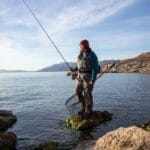
Stories about a moment, or string of moments, that ignited a passion for fishing.

We were headed northbound for our second wedding anniversary. We had a van full of fishing gear and were set to explore fresh water that had been on the hit list for years. My wife, Brittney, and I were all smiles. What started as a seemingly innocent rhythmic vibration in a wheel upon rolling into…
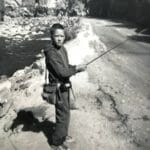
Childhood days spent wandering and fishing California’s South Fork Kings River became the foundation of a man’s life as a sportsman-conservationist. By Bill Templin You probably have one of those places in the Great Outdoors that you’ve been visiting since you were very young. For me it’s the South Fork Kings River.SFKingsRiver@oldSwimminHole_Templin.jpg (L) The “old…
Executive summary Fishing for trout is a passion shared by countless anglers across the country. The challenge of catching a monster Lahontan cutthroat trout from Nevada’s Pyramid Lake or a salter brook trout from a coastal stream in Massachusetts can be rewarding and frustrating all at the same time. As fly-fishing author John Gierach described…
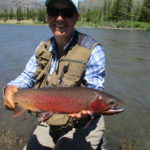
Diana Miller with a Yellowstone cutthroat trout caught in a tributary to Yellowstone Lake in the summer of 2018. Dave Sweet photo. Trout Unlimited is devoting the month of September to celebrating public lands and the agencies dedicated to upholding America’s public land heritage. It’s no coincidence that National Hunting and Fishing Day and National…
Blog site of the Great Bay Chapter of Trout Unlimited, Chapter 613.
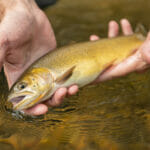
“People don’t necessarily think about the necessity of fish to be able to move like terrestrial animals,” said Anna Senecal, an aquatic habitat biologist with Wyoming Game and Fish. “We all know about bird migrations and we know about ungulate elk migrations, but fish need to move as well.”
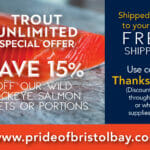
Here’s your chance to be a part of permanent protection for Bristol Bay. For the month of May 2021, Pride of Bristol Bay is offering TU members a 15% discount on their delicious sockeye salmon, while supplies last. Just go to Pride of Bristol Bay and enter the the code ThanksTU15 at checkout. Orders are valid for the month of May while supplies last, for a one-time purchase of any size box, fillets or portions.
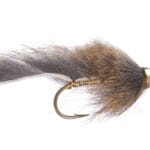
It’s Easter season, so I thought it would be appropriate to mention the “bunny hatch.” No, this isn’t about the eggs that the Easter Bunny leaves. This is about flies that use rabbit or squirrel Zonker strips. Now that I’ve done my best attempt at a pun, let’s talk about patterns. Leeches, Slump Busters, Lunch…








